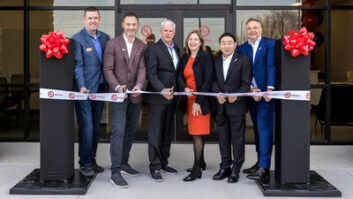Perhaps the most daunting aspect for a small firm or start-up vendor attending RetailVision is trying to understand exactly what is needed to attract the big national retailers to a new product.
Although there were several common themes on this topic from the three retail executives hosting the Retail University seminars during the 2005 Spring RetailVision, held here earlier this month, each also had very distinct demands. Some of these were clear, such as the product must help increase revenue or should be something brand new to the market, but other requirements were a bit less obvious.
“Dealing with RadioShack is different. Vendors need to realize that we have 5,200 stores [not counting licensees], so we would need 5,200 displays. Not everyone thinks of this when they talk to us,” said Curt Vasterling, RadioShack’s global sourcing senior director. However, being able to meet RadioShack’s demands in the end can be rewarding.
“It’s very difficult to get into RadioShack, but once you are in we are reluctant to let someone go,” Vasterling said.
At the 20-store Micro Center chain Kevin Jones, merchandising VP, said a vendor has to be ready to move fast and be ready to support the product once it is accepted. “You need to contact the appropriate merchandising manager, contact the new product test group and the person calling on us should have decision-making power,” Jones said, adding that the vendor’s salesperson needs to know their product inside and out, and it never hurts to spend some time inside a Micro Center store to get a feel for the environment.
Imran Jooma, assistant merchandising VP for CircuitCity.com, said that despite having the limitless shelf space that comes with an online operation, CircuitCity.com will look more favorably on a vendor or service provider that can bring something extra to the bargaining table.
“We are looking for any service that we can tie into our current products, such as white-glove TV delivery,” Jooma said. Circuit is paying particular interest these days to PC and imaging accessories and peripherals along with products geared toward women.
On the bright side, Jooma said, having a virtual store allows Circuit to try to give new brands a chance they might otherwise not get because there are no shelf-space issues. If the product sells well it can work its way into the stores.
At RadioShack the situation is different, Vasterling said.
“Vendors must show us product farther out because it takes RadioShack so long to get product to all 7,000 stores. Right now we are planning for mid-2006,” he said. “We are looking for opportunities to strategically align with a vendor, and we need a family of products. This way if one product doesn’t sell, there is another.”
And vendors should not expect their job to end with the placement of a product into their stores.
At Micro Center a manufacturer can expect their product to be sold by a very proactive, commissioned sales associate, but Jones said it is up to the vendor to entice that person to sell their product.
“This is not an easy task and one most vendors miss,” Jones said. Pumping up the sales associates can require more effort then putting a spiff on a product. On-site training and detailing are very important, he added.
Once the sales associate is on your side the vendor needs to take steps to ensure customers see their products among the thousands of others in the store. This can be accomplished through effective promotions and having eye-popping packaging.
RadioShack, with its smaller store format, has other needs. The chain searches out products that cannot be found elsewhere or from a company that will to give RadioShack exclusive selling rights for a set period of time, Vasterling said.













